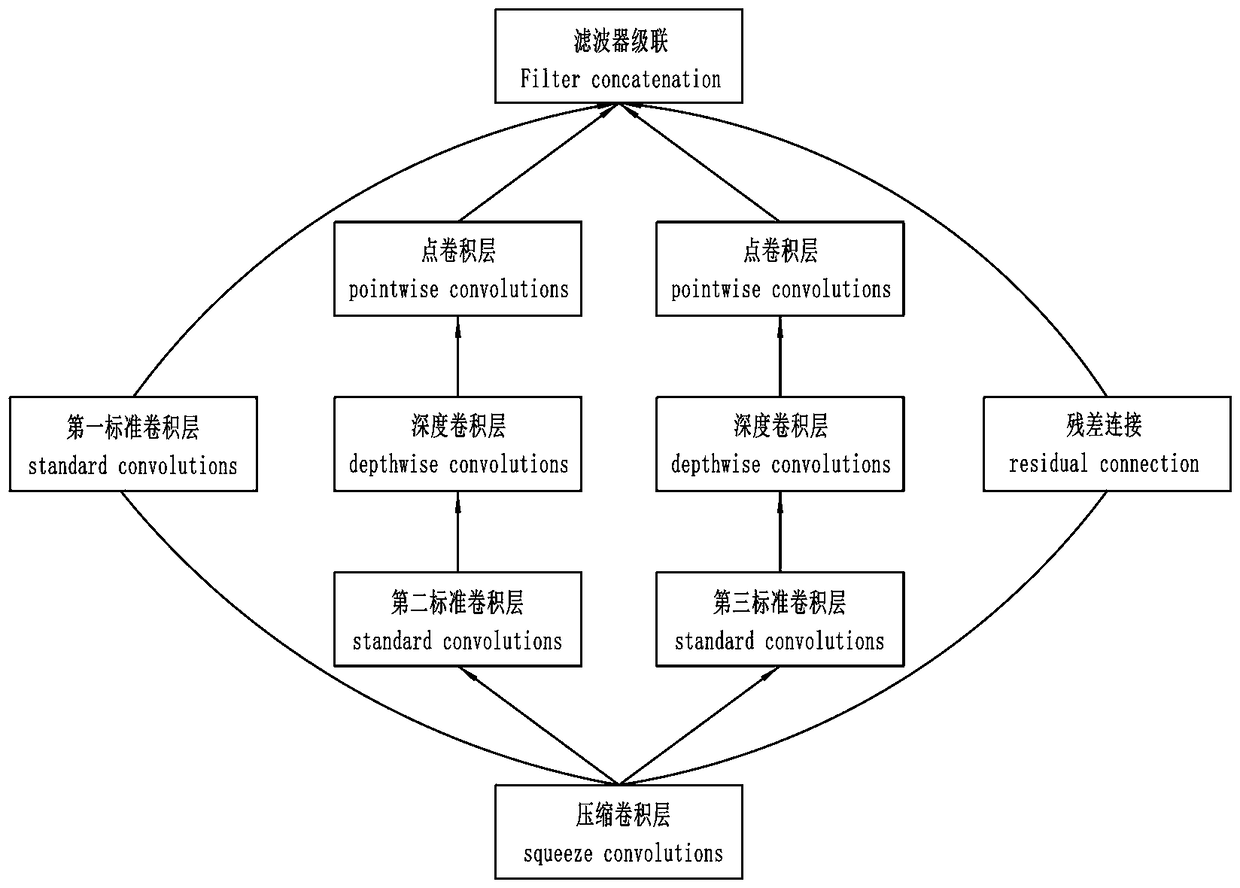Deep learning-based lightweight algorithm for recognizing electrocardio data
An ECG data and deep learning technology, applied in character and pattern recognition, computing, computer components and other directions, can solve problems such as long training time, large training parameters, and backward algorithms, and achieve the effect of ensuring stability
- Summary
- Abstract
- Description
- Claims
- Application Information
AI Technical Summary
Problems solved by technology
Method used
Image
Examples
Embodiment Construction
[0044] The technical solutions of the present invention will be described in further detail below through specific implementation methods.
[0045] Such as figure 1 As shown, a lightweight algorithm for identifying ECG data based on deep learning includes the following steps:
[0046] Step 1. Pass the extracted ECG data through a standard convolution layer to perform rough extraction of data features in preparation for the next feature extraction;
[0047] Step 2. Pass the roughly extracted data features through a pooling layer, and then send them to the core module Lite module to extract deep-level data features;
[0048] Step 3. Pass the deep-level data features through a pooling layer, and then send them to two fully connected layers to purify the deep-level data features;
[0049] Step 4. Send the purified data features into the classifier function for feature classification output.
[0050] Specifically, such as figure 2 As shown, in step 2, the core module Lite modu...
PUM
 Login to View More
Login to View More Abstract
Description
Claims
Application Information
 Login to View More
Login to View More - R&D
- Intellectual Property
- Life Sciences
- Materials
- Tech Scout
- Unparalleled Data Quality
- Higher Quality Content
- 60% Fewer Hallucinations
Browse by: Latest US Patents, China's latest patents, Technical Efficacy Thesaurus, Application Domain, Technology Topic, Popular Technical Reports.
© 2025 PatSnap. All rights reserved.Legal|Privacy policy|Modern Slavery Act Transparency Statement|Sitemap|About US| Contact US: help@patsnap.com



